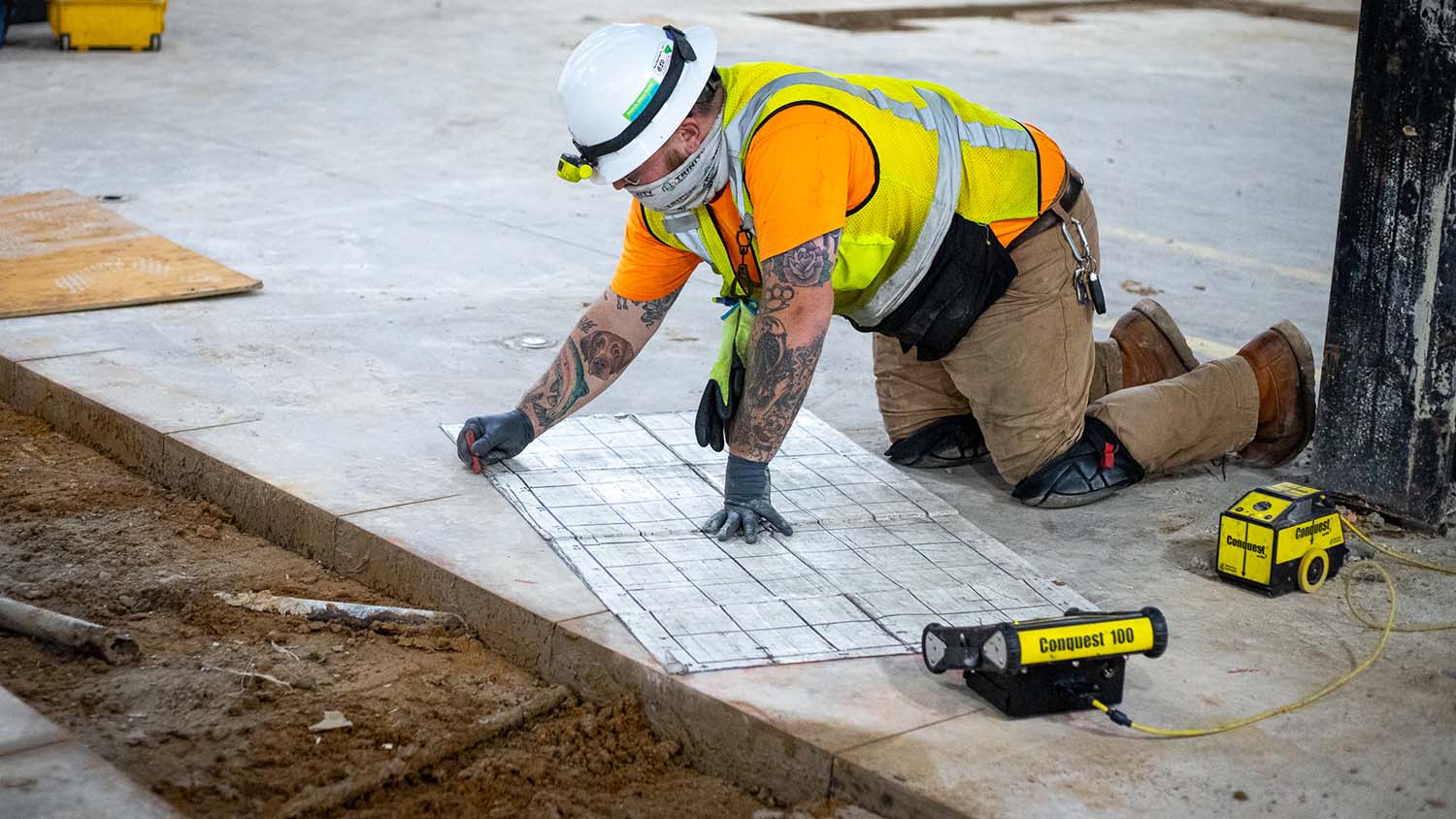Selecting the Right Concrete Scanning Equipment
Selecting the Right Concrete Scanning Equipment
Blog Article
Reveal the Transformative Power of Concrete Scanning in Making Best Use Of Effectiveness and Security
Concrete scanning has actually emerged as a critical device in the building and construction market, providing unequaled advantages in boosting project efficiency and making certain security standards. By making use of innovative innovation, concrete scanning enables professionals to see beyond the surface, discovering covert complexities that can affect the architectural integrity of a structure. The transformative power of concrete scanning exists in its capacity to supply real-time information and in-depth understandings, transforming just how projects are prepared and performed. As we explore the intricacies of this ingenious strategy, a globe of possibilities opens up, showcasing a brand-new age of building methods that focus on accuracy and security.
Significance of Concrete Scanning
Ensuring the structural integrity and safety of building projects begins with the crucial action of performing comprehensive concrete scanning. Concrete scanning is a non-destructive technique made use of to detect and map subsurface components within concrete frameworks.
The significance of concrete scanning can not be overemphasized, as it plays an essential role in protecting against accidents, lessening task delays, and ensuring the long-lasting longevity of the building and construction. By determining possible risks prior to the construction stage begins, builders can implement suitable security steps and make informed choices pertaining to the style and execution of the task. In addition, concrete scanning assists in enhancing job timelines and budget by avoiding unexpected costs and hold-ups that may occur because of unforeseen obstructions within the concrete. Eventually, spending in comprehensive concrete scanning is a proactive approach that enhances both performance and safety and security in construction projects.
How Concrete Scanning Functions
Concrete scanning runs as an important tool in building and construction projects by employing sophisticated technologies to discover and map subsurface aspects without triggering structural damage. Ground Penetrating Radar (GPR) and Electromagnetic Induction (EMI) are two key techniques made use of in concrete scanning. GPR works by giving off high-frequency radar pulses into the surface area, which recover when they come across subsurface objects or gaps. The time taken for the signal to return shows the deepness and place of the things. EMI, on the other hand, uses electromagnetic areas to recognize variations in product structures, such as recognizing rebar or conduits within concrete structures.
Throughout the scanning procedure, the data accumulated is assessed in real-time, enabling instant identification of prospective threats or obstacles below the surface. By using these innovative innovations, concrete scanning substantially reduces the risk of expensive problems and injuries on building websites.
Advantages of Concrete Scanning
One of the primary advantages of concrete scanning is the ability to detect and situate ingrained objects such as rebar, post-tension wires, and channels precisely. Concrete scanning helps in planning and making more efficiently, as it provides accurate information concerning the location and depth of structural parts.

Study: Concrete Scanning Success

In one more instance, a building firm made use of 3D concrete scanning to evaluate the problem old concrete structures in a historical structure. The detailed scans offered useful understandings into the degree of deterioration and assisted prioritize upkeep initiatives properly. By proactively dealing with areas of concern determined with scanning, the firm was able to expand the life-span of the framework and ensure resident security.
These study underscore the transformative power of concrete scanning in enhancing effectiveness, accuracy, and safety in building jobs.
Applying Concrete Scanning in Projects
Applying innovative scanning modern technologies throughout building and construction tasks has become increasingly important for enhancing precision and safety. By incorporating concrete scanning right into task preparation and implementation, building and construction groups can determine potential threats, such as rebar or post-tension cables, hidden within concrete structures. This aggressive technique reduces the danger of mishaps, delays, and costly rework, inevitably causing extra effective project timelines and spending plans.
To apply concrete scanning properly, task supervisors must collaborate very closely with seasoned scanning professionals to identify one of the most appropriate scanning strategies for the specific task needs. Involving scanning specialists from the beginning of a task allows the group to develop detailed scanning plans that attend to vital areas of problem and guarantee detailed data collection.
In addition, including concrete scanning into normal job workflows can streamline decision-making procedures, as real-time scan information supplies Recommended Reading instant understandings right into the condition of concrete structures - Concrete Scanning. This data-driven technique facilitates informed analytic and allows groups to make adjustments immediately, cultivating a culture of effectiveness and safety and security throughout the job lifecycle

Conclusion
In final thought, concrete scanning plays a crucial duty in improving effectiveness and security in construction projects. By utilizing sophisticated technology to map and identify out underlying frameworks within concrete, this process aids to stop costly errors, ensure structural honesty, and decrease threats on site. With the capacity to uncover hidden aspects and give precise information, concrete scanning confirms to be an important tool for optimizing project results and optimizing general success.
Concrete scanning is a non-destructive approach utilized to find and map subsurface elements within concrete frameworks. In addition, concrete scanning aids in maximizing project timelines and spending plan by staying clear of unexpected costs and hold-ups that may occur due to unpredicted blockages within the concrete. One significant situation research entails a massive renovation project where concrete scanning played a critical role in making sure task success.In one more situation, a building business used 3D concrete scanning to evaluate the problem of maturing concrete structures in a historic building. By incorporating concrete scanning right into job planning and implementation, construction groups can recognize potential hazards, such as More about the author rebar or post-tension cords, concealed within concrete frameworks.
Report this page